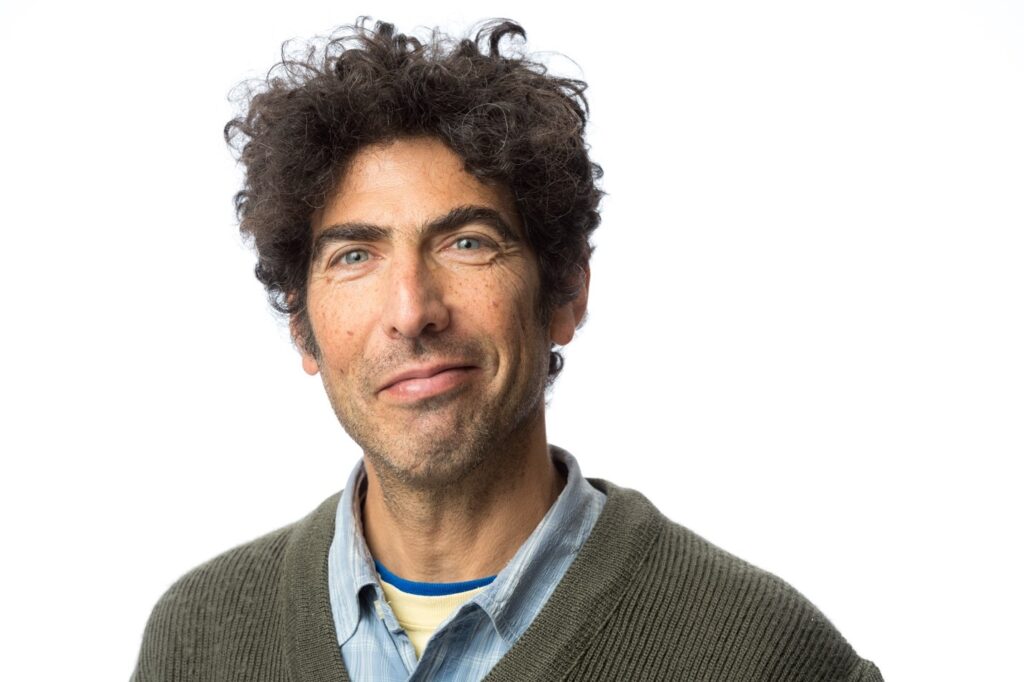Mettez-vous hors ligne avec l'application Player FM !
Michael Hoberman, Fitchburg State University – Jews in the North American Wilderness
Manage episode 433725741 series 2459839
 We know the name John Muir, but others came before him.
We know the name John Muir, but others came before him.
Michael Hoberman, professor of English studies at Fitchburg State University, explores a few of them.
Michael Hoberman is a professor of American literature at Fitchburg State University. He is the author of several books on Jewish history in the US, including New Israel/New England: Jews and Puritans in Early America and A Hundred Acres of America: The Geography of Jewish American Literary History. His latest book, Imagining Early American Jews, will be published by Oxford University Press in late 2025, and he is currently at work on a biography of Theodore Seixas Solomons. Hoberman’s essays on American Jewish history can be found in Tablet Magazine.
Jews in the North American Wilderness
https://academicminute.org/wp-content/uploads/2024/08/08-12-24-Fitchburg-State-Jews-in-the-North-American-Wilderness.mp3On July 12, 1895 Theodore Seixas Solomons and his friend Ernest Bonner left a camp called Jackass Meadows, a hundred miles northeast of Fresno, for an exploratory excursion through the heart of California’s Sierra Nevada range. Over two weeks of hiking through this territory would lead Solomons and Bonner to the brink of solving one of the greatest mysteries of “the Californian Alps”: how to traverse the middle portions of the trackless alpine wilderness that lay between the Yosemite Valley and Mount Whitney. In 1915, when California officials finally commissioned the footpath that Solomons envisioned, they chose to name it in honor of the Scottish-born conservationist hero and Sierra Club founder, John Muir.
It was Theodore Solomons, however, the great- great grandson of a Jewish clergyman who attended George Washington’s inauguration, who first conceived of the trail and navigated its most challenging sections. Solomons’ role in the development of the John Muir Trail has long been overshadowed by the legacy of its namesake, but it stands as a reminder of the close, if often disregarded, bonds that Jews have formed with the North American wilderness.
Late in his life, Solomons recounted that the dream of walking the length of the High Sierra had first come to him in the summer of 1884 (a year after his bar-mitzvah) while he was out “herding [his] uncle’s cattle in an immense unfenced alfalfa field.” When Solomons died at the age of seventy-nine in 1948 only a handful of his contemporaries acknowledged the role he had played in the trail’s creation.
As John Muir’s reputation has come under renewed scrutiny owing to his numerous disparaging comments regarding Chinese immigrants and American Indians, complicating our awareness of the mountains’ cultural significance and, more specifically, of his namesake trail’s history seems like a good idea.
Read More:
[Tablet] – Jews in the Wilderness
The post Michael Hoberman, Fitchburg State University – Jews in the North American Wilderness appeared first on The Academic Minute.
288 episodes
Manage episode 433725741 series 2459839
 We know the name John Muir, but others came before him.
We know the name John Muir, but others came before him.
Michael Hoberman, professor of English studies at Fitchburg State University, explores a few of them.
Michael Hoberman is a professor of American literature at Fitchburg State University. He is the author of several books on Jewish history in the US, including New Israel/New England: Jews and Puritans in Early America and A Hundred Acres of America: The Geography of Jewish American Literary History. His latest book, Imagining Early American Jews, will be published by Oxford University Press in late 2025, and he is currently at work on a biography of Theodore Seixas Solomons. Hoberman’s essays on American Jewish history can be found in Tablet Magazine.
Jews in the North American Wilderness
https://academicminute.org/wp-content/uploads/2024/08/08-12-24-Fitchburg-State-Jews-in-the-North-American-Wilderness.mp3On July 12, 1895 Theodore Seixas Solomons and his friend Ernest Bonner left a camp called Jackass Meadows, a hundred miles northeast of Fresno, for an exploratory excursion through the heart of California’s Sierra Nevada range. Over two weeks of hiking through this territory would lead Solomons and Bonner to the brink of solving one of the greatest mysteries of “the Californian Alps”: how to traverse the middle portions of the trackless alpine wilderness that lay between the Yosemite Valley and Mount Whitney. In 1915, when California officials finally commissioned the footpath that Solomons envisioned, they chose to name it in honor of the Scottish-born conservationist hero and Sierra Club founder, John Muir.
It was Theodore Solomons, however, the great- great grandson of a Jewish clergyman who attended George Washington’s inauguration, who first conceived of the trail and navigated its most challenging sections. Solomons’ role in the development of the John Muir Trail has long been overshadowed by the legacy of its namesake, but it stands as a reminder of the close, if often disregarded, bonds that Jews have formed with the North American wilderness.
Late in his life, Solomons recounted that the dream of walking the length of the High Sierra had first come to him in the summer of 1884 (a year after his bar-mitzvah) while he was out “herding [his] uncle’s cattle in an immense unfenced alfalfa field.” When Solomons died at the age of seventy-nine in 1948 only a handful of his contemporaries acknowledged the role he had played in the trail’s creation.
As John Muir’s reputation has come under renewed scrutiny owing to his numerous disparaging comments regarding Chinese immigrants and American Indians, complicating our awareness of the mountains’ cultural significance and, more specifically, of his namesake trail’s history seems like a good idea.
Read More:
[Tablet] – Jews in the Wilderness
The post Michael Hoberman, Fitchburg State University – Jews in the North American Wilderness appeared first on The Academic Minute.
288 episodes
Semua episod
×Bienvenue sur Lecteur FM!
Lecteur FM recherche sur Internet des podcasts de haute qualité que vous pourrez apprécier dès maintenant. C'est la meilleure application de podcast et fonctionne sur Android, iPhone et le Web. Inscrivez-vous pour synchroniser les abonnements sur tous les appareils.




